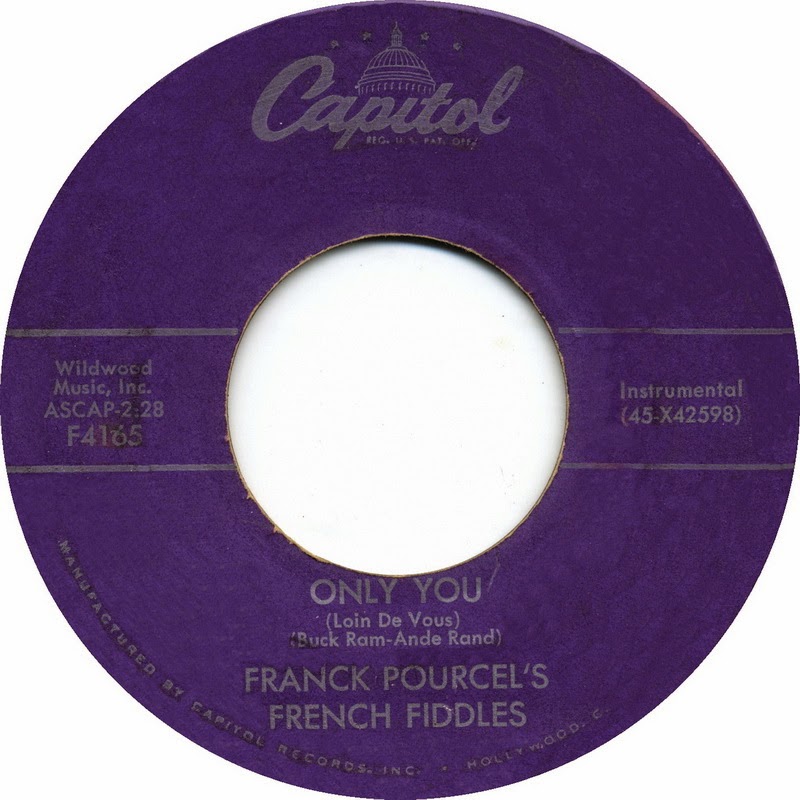Unlike Christmas and Halloween, Thanksgiving doesn't inspire much holiday music, and no attempts at writing a Thanksgiving standard have achieved much commercial success.
When I hosted Rhythm Ranch, a thematic oldies show on WFHB-FM, I would often program special shows for the holidays, but I always struggled to come up with songs for Thanksgiving. For Thanksgiving—unlike many other holidays—I was never able to do more than a set or two of Thanksgiving-related songs. Programming an entire two-hour show of Thanksgiving music was beyond the limits of my knowledge and my record collection.
Today on Music Weird, I have compiled a short playlist of songs for Thanksgiving. Some of them are straight-up holiday tunes and others are a stretch. Only a few of them are very widely known or well remembered.
1. Gene Autry – "Guffy the Goofy Gobbler" (1950)
Singing cowboy Gene Autry recorded the Christmas classic "Rudolph the Red-Nosed Reindeer" and struck gold. Afterward, he recorded a lot more holiday music, but none of it matched the success of "Rudolph." Autry's Thanksgiving entry, "Guffy the Goofy Gobbler," is practically "Rudolph" with new lyrics (both were co-written by Johnny Marks). The flip side of the record had another Thanksgiving tune called "Little Johnny Pilgrim." Billboard's review of the record described the latter as a "word-heavy Thanksgiving song [that] tells the historic story vaguely."
2. Lawrence Welk & the Lennon Sisters – "Thank the Lord (For This Thanksgiving Day)" (1959)
John Gary also recorded this song in 1959.
3. Perry Como – "Prayer of Thanksgiving (We Gather Together)" (1952)
Despite the title, this sounds like a Christmas record, mainly because of the choir.
4. Little Eva – "Let's Turkey Trot" (1963)
This dance song was written by Gerry Goffin and Jack Keller, even though some copies of the 45 credited Carole King instead of Keller. The song incorporates the call of the wild turkey—"gobble"—into its nonsense background vocal chant and became a Top 20 hit.
5. Chris Rock – "Nike Turkey" (1991)
Chris Rock performed this Thanksgiving parody of "Parents Just Don't Understand" by DJ Jazzy Jeff & the Fresh Prince on Saturday Night Live.
6. Ohio Players – "Jive Turkey" (1974)
Not a Thanksgiving song, but it mentions turkey, so it'll do if you're scraping the bottom of the roasting pan to find songs for a Thanksgiving playlist. The song is actually about a jilted lover.
7. Johnny Cash – "Thanksgiving Prayer" (1997)
Johnny Cash performed the song "Thanksgiving Prayer" on an episode of the television show Dr. Quinn, Medicine Woman. I would hate to be the actor in a scene like this one who has to awkwardly sit and approvingly look on as someone else sings. Everyone who ever co-starred with Elvis in his movies had to do that on camera a few times.
8. Adam Sandler – "The Thanksgiving Song" (1992)
Another song from Saturday Night Live. This song was released to radio as a promotional single and actually reached #67 on Billboard's Hot 100. Today, Rolling Stone deems it a "Thanksgiving classic," but the bar is pretty low for that title, since the world of Thanksgiving music doesn't have a song like "White Christmas" to compete with.
9. Arlo Guthrie – "Alice's Restaurant" (1968)
This 18-minute long story-song about some goings-on "two Thanksgivings ago" took up the whole first side of Arlo Guthrie's album of the same name. Many people listen to this song every year as part of their Thanksgiving tradition.
10. Cousin Emmy – "Turkey in the Straw" (1965-66)
This traditional song isn't a Thanksgiving song, but it mentions turkeys, at least in the vocal versions. Here's an instrumental rendition by Cousin Emmy in which she performs it with her face. I'm not sure of the exact year that this clip was filmed, but it is from Pete Seeger's Rainbow Quest television show, which aired from 1965-1966. Homer & Jethro recorded a version of this song as "Chicken in the Pan."
11. George Gobel – "Thanksgiving Song" (1955)
George Gobel introduced the song "Thanksgiving Song," written by Farlan Myers and Hal Levy, on television's The George Gobel Show in 1955. (Levy taught at UCLA and co-wrote Gene Vincent's "Blue Jean Bop.") Afterward, Dinah Shore would perform "Thanksgiving Song" regularly around Thanksgiving. I couldn't find a recorded version to link to.
 |
| George Gobel |
12. The Clickettes – "Jive Time Turkey" (1958)
A story about a wolf who tries to obtain a fat turkey on Thanksgiving.








